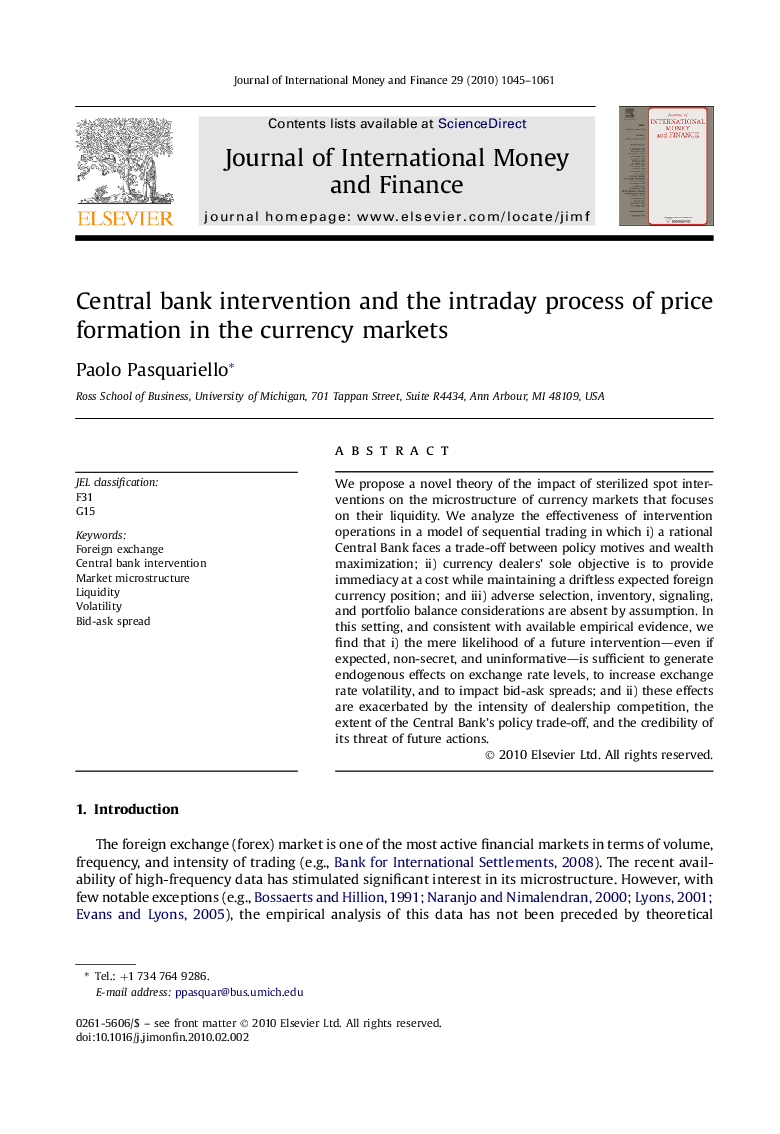| Article ID | Journal | Published Year | Pages | File Type |
|---|---|---|---|---|
| 964311 | Journal of International Money and Finance | 2010 | 17 Pages |
We propose a novel theory of the impact of sterilized spot interventions on the microstructure of currency markets that focuses on their liquidity. We analyze the effectiveness of intervention operations in a model of sequential trading in which i) a rational Central Bank faces a trade-off between policy motives and wealth maximization; ii) currency dealers' sole objective is to provide immediacy at a cost while maintaining a driftless expected foreign currency position; and iii) adverse selection, inventory, signaling, and portfolio balance considerations are absent by assumption. In this setting, and consistent with available empirical evidence, we find that i) the mere likelihood of a future intervention—even if expected, non-secret, and uninformative—is sufficient to generate endogenous effects on exchange rate levels, to increase exchange rate volatility, and to impact bid-ask spreads; and ii) these effects are exacerbated by the intensity of dealership competition, the extent of the Central Bank's policy trade-off, and the credibility of its threat of future actions.
